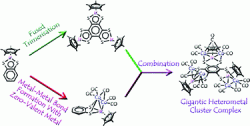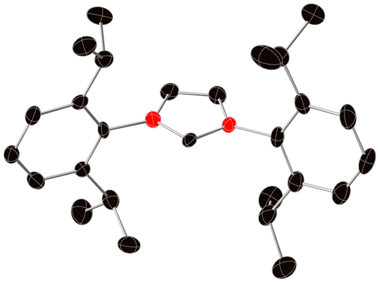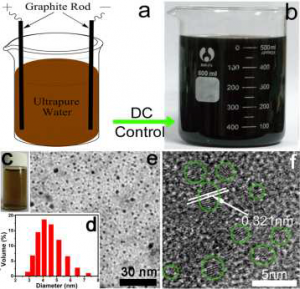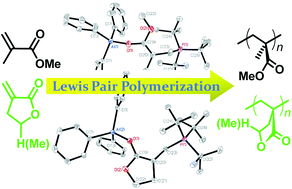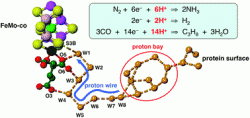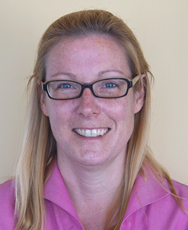May 25th 2012, and Calgary welcomed chemists from Canada and further afield to the
95th Canadian Chemistry Conference and Exhibition (CSC2012). With the Canadian Rockies providing a stunning backdrop, and with blue skies and glorious sunshine, the city was the perfect venue for this gathering.
About 2000 chemists arrived in Calgary to share research, catch up with old acquaintances and make new friends. This was my third CSC meeting, and the conference is a highlight of my year. I therefore was not expecting the question I was asked at immigration; ‘Why would you travel all the way to Calgary from the UK to attend a conference?’ ‘He’s clearly not been to a CSC meeting’, I thought to myself as I collected my passport back and entered Canada, looking forward to my next few days at the conference.

Calgary Tower
The CSC meeting covers all branches of chemistry however, I attended mainly for the inorganic sessions. The meeting programme provided an excellent range of inorganic themes, including hydrogen activation, physical methods for coordination chemistry, main group chemistry, solar fuels, metals in biology, ligand design, inorganic molecular modelling, optical and electronic materials, solid state chemistry, and catalysis. Reflecting the impact that inorganic chemistry has on many different areas of chemical research, 9 of these symposia were arranged jointly with other Canadian Society for Chemistry divisions. Two chemists were honoured at CSC2012 by Symposia in their name: Barry Lever and Howard Alper.
Of course, the conference was not all hard work and there was some hard partying as well! Highlights included the Bruker event on Sunday night and, my favourite, the inorganic mixer on Tuesday night (which Dalton Transactions sponsored). I even found time during my stay in Calgary to have dinner in the revolving restaurant at the top of the Calgary Tower!
Keeping up with the conference was helped by a number of people using Twitter to spread the excitement of the event (#CSC2012 if you want to take a look on Twitter), and Twitter was used to good effect. Anyone not able to attend could get the flavour of the meeting from the tweets, and those at the meeting could make sure they did not miss out on anything that had just been announced (free frisbees available in the Exhibition!). The organisers also posted photos from the conference on Flickr.
The Canadian Chemistry Conference is an excellent showcase for the best inorganic chemical research taking place in Canada and this year’s meeting provided an enjoyable and stimulating five days. Credit and thanks are due to the conference chair, Warren Piers (University of Calgary) and the other members of the organising committee for all their hard work and efforts in putting together an excellent programme of scientific and social events. I am looking forward to seeing what next year’s meeting in Quebec City brings!
Don’t miss these two inorganic conferences in Canada in July
6th International Symposium on Bioorganometallic Chemistry
Challenges in Inorganic and Materials Chemistry (ISACS8)
To get a flavour of CSC meeting, take a look at these recent articles from some of the delegates at the conference.
Cycloruthenated sensitizers: improving the dye-sensitized solar cell with classical inorganic chemistry principles
Kiyoshi C. D. Robson, Paolo G. Bomben and Curtis P. Berlinguette
Dalton Trans., 2012, Advance Article
DOI=10.1039/C2DT30825H
Synthesis and reactivity of 2-azametallacyclobutanes
Alexander Dauth and Jennifer A. Love
Dalton Trans., 2012, Advance Article
DOI=10.1039/C2DT30639E
Non-innocent ligand behaviour of a bimetallic Cu complex employing a bridging catecholate
Tim J. Dunn, Linus Chiang, Caterina F. Ramogida, Michael I. Webb, Didier Savard, Miyuki Sakaguchi, Takashi Ogura, Yuichi Shimazaki and Tim Storr
Dalton Trans., 2012, Advance Article
DOI=10.1039/C2DT30444A
Rigid NON- and NSN-ligand complexes of tetravalent and trivalent uranium: comparison of U–OAr2 and U–SAr2 bonding
Balamurugan Vidjayacoumar, Sougandi Ilango, Matthew J. Ray, Terry Chu, Kristopher B. Kolpin, Nicholas R. Andreychuk, Carlos A. Cruz, David J. H. Emslie, Hilary A. Jenkins and James F. Britten
Dalton Trans., 2012, Advance Article
DOI=10.1039/C2DT30247K
Heterobimetallic lanthanide–gold coordination polymers: structure and emissive properties of isomorphous [nBu4N]2[Ln(NO3)4Au(CN)2] 1-D chains
Ryan J. Roberts, Xiaobo Li, Tye F. Lacey, Zhong Pan, Howard H. Patterson and Daniel B. Leznoff
Dalton Trans., 2012,41, 6992-6997
DOI=10.1039/C2DT30156C
Ni(II), Pd(II) and Pt(II) complexes of PNP and PSP tridentate amino–phosphine ligands
Michael J. Sgro and Douglas W. Stephan
Dalton Trans., 2012,41, 6791-6802
DOI=10.1039/C2DT30373F
Were you at the CSC meeting? Share your stories of the conference with us in the comments below.
Comments Off on 95th Canadian Chemistry Conference and Exhibition


